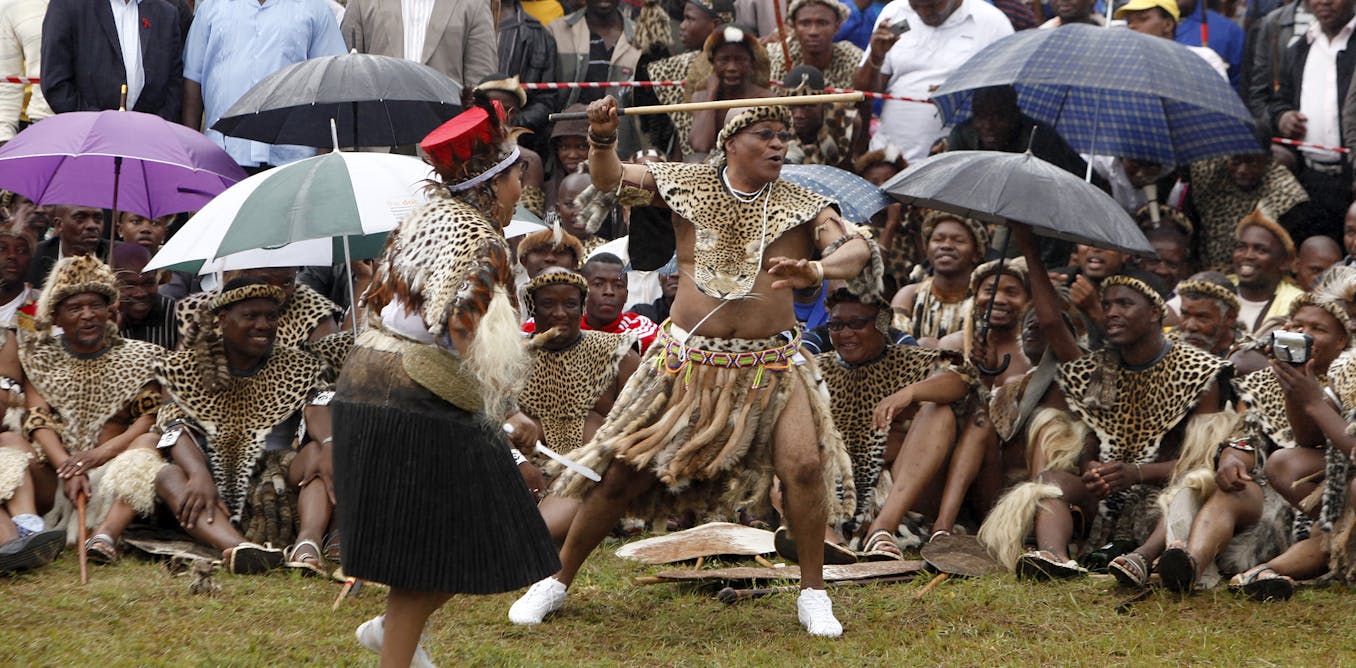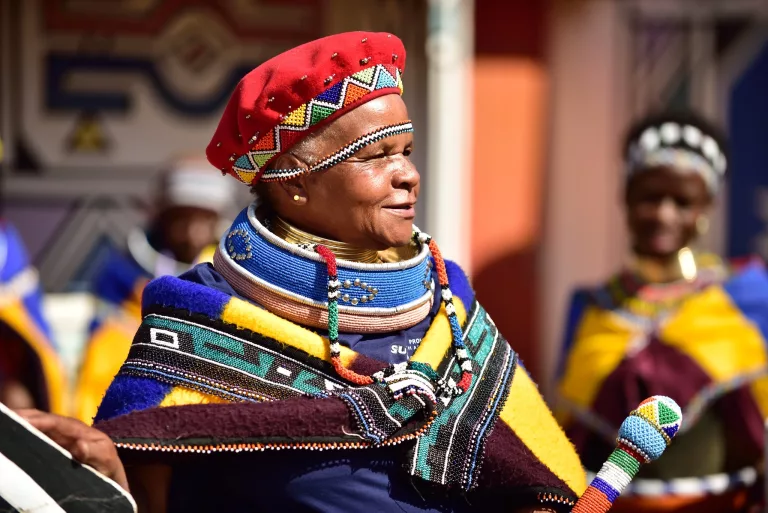The 8-Second Trick For South African Culture Today
The 8-Second Trick For South African Culture Today
Blog Article
Everything about South African Culture Today
Table of ContentsSouth African Culture Today - TruthsSouth African Culture Today Fundamentals ExplainedThe Best Guide To South African Culture TodaySome Ideas on South African Culture Today You Should KnowHow South African Culture Today can Save You Time, Stress, and Money.Getting The South African Culture Today To Work
An issue of value in Zambian villages is the passing away of liked ones. All participants of the village put cash, time and initiative together for the interment of the deceased.Throughout the mourning duration; males remain outside your home and the ladies remain inside the house of the deceased. After talking about the dead, the town walks to the place of burial to claim their last bye-byes. Songs and dance is a very vital element of the Zambian society. The numerous tribal systems have their very own dance kinds; nevertheless, makishi prevails among all tribes.
The smart Trick of South African Culture Today That Nobody is Discussing
When it pertains to songs, drums are utilized one of the most, with a variety of drumming events. In Zambia, majority of the people are Christian; Protestant and Roman Catholic. There are tiny groups of Muslims and Hindus, with the rest complying with neighborhood native tribal beliefs.

South African heritage and culture is immensely diverse, and contains several teams of people that each have their own customs and beliefs. Having such a diversity of people and societies is what makes South Africa so unique. In truth feeling of the phrase, we are a rainbow country.
Making it the 7th on the list of countries with the most Portuguese people in it outside of Portugal. Portuguese is not just a culture, but it is also a language and a nationality. Portuguese people originate from the country of Portugal in Europe, nevertheless, due to Portugal (like several other countries in Europe) discovering the globe and overcoming various other nations throughout the 15th 20th centuries, South Africa has what we call Portuguese South African's living in it.
More About South African Culture Today
Amongst the famous functions of the topography is a plateau that covers almost 2 thirds of the center of the nation. The plateau facility increases towards the southeast, where it climaxes in the Drakensberg variety, component of a cliff that divides the plateau from the seaside areas. The Drakensburg includes Champagne Castle, the greatest peak in the nation.
The region north of the Witwatersrand, called the bushveld, inclines downward from east to west towards the Limpopo River, which develops the global border. The western area of the plateau, the middleveld, additionally comes down towards the west and differs in elevation between the highveld and bushveld. In between the Drakensburg and the eastern and southern coastline, the land descends to the sea.
Nearer the shore there is a low-lying plain called the eastern lowveld. Southwest of the plateau the nation ends up being progressively a lot more dry, paving the way to the stony desert of the Great Karroo, approached the east by the reduced, much better watered plateau of the Little Karroo. Dividing the completely dry southern inside from the sandy littoral of the southern coastline and West Cape is another variety, the Langeberg.
The Only Guide for South African Culture Today
The country's racially, ethnically, and politically separated background has actually created nationwide and subnational icons that still operate as icons of the country, and others symbols that are accepted just by particular teams. The monoliths to white inhabitant conquest and political supremacy, such as the Afrikaner Voortrekker ("pioneer") Monolith in Pretoria and the Rhodes Monument recognizing the British colonial realm builder and Cape prime preacher Cecil Rhodes, remain sectarian symbols.
The initial modern-day citizens were the San ("bushman") hunter-gatherers and the Khoi ("Hottentot") peoples, who herded animals (South African culture today). browse around these guys The San might have existed for hundreds of years and left proof of their visibility in countless ancient cavern paints ("rock art"). Bantu-speaking clans that were the ancestors of the Nguni (today's amaZulu, amaXhosa, amaSwazi, and why not try these out vaTsonga peoples) and Tswana-Sotho language teams (today's Batswana and Southern and Northern Basotho) moved down from eastern Africa as early as the fifteenth century

The 2 previous republics of the Orange Free State and Transvaal (South African Republic) were established by Afrikaner inhabitants that beat and dispossessed the Basotho and Batswana. Lesotho would certainly have been forcibly included right into the Orange Free State without the expansion of British protection in 1869. The ultimate unification of the nation arised from the South African Battle (18991902) between the British and the 2 Afrikaner republics, which lowered the nation to destroy at the beginning of the twentieth century.
Afrikaners traditionally considered themselves the just real South Africans and, while granting complete citizenship to all locals of European descent, refuted that standing to people of shade till the democratic shift of 1994. British South Africans preserve a feeling of social and social link to Great Britain without weakening their identity as South Africans.
The Only Guide to South African Culture Today
The diversity and fragmentation within ethnic collections and the equilibrium of tensions between those groups during the twentieth century avoided interethnic civil problem. While intergroup tensions over sources, entitlements, and political prominence remain, those disputes click to read are as most likely to pit Zulu against Zulu as Zulu versus Xhosa or African versus Afrikaner.
From colonial India, British vendors and administrators brought the bent steel decorative roofs and slender shoelace job pillars that still epitomize the terraces of cottages in the areas and cities throughout the country. Residences of prayer add an important building aspect also in the smallest communities. In addition to the skyrocketing steeples and classic stonework of Afrikaans Dutch Reformed churches, Anglican churches, synagogues, mosques, and Hindu shrines supply range to the spiritual building scene.

Butchering and the brewing of typical cereal beer are crucial in safeguarding the participation and goodwill of the ancestors that are taken into consideration the guardians of excellent ton of money, success, and health. Indian neighborhoods keep their indigenous cooking traditions and use them on Islamic and Hindu ritual and ritualistic occasions. Afrikaners and Coloured people gather at weekend breaks and special events at multifamily barbeques called braais, where community bonds are reinforced.
Since this was the main economic business of both black Africans and white homesteaders, conflict between those groups focused on the belongings of grazing land and livestock. In 1867, the largest ruby down payments in the world were discovered at Kimberley in the west main area. The riches from those fields helped finance the exploitation of the best gold reef worldwide, which was uncovered on the Witwatersrand in 1886.
Little Known Facts About South African Culture Today.
This led to misunderstandings and intentional misrepresentation in the negotiations of white settlers and government authorities with African principals throughout the colonial duration (South African culture today). In the facility of African reserves, some facets of public and mainly "tribal trust" land tenure were maintained, and even in white rural areas, types of common period were still practiced in locations with African communities
After the autonomous makeover of 1994, programs for land restitution, redistribution, and reform were instituted, but development has actually been sluggish. The white minority still regulates eighty percent of the land. In the wake of agricultural land invasions in Zimbabwe, the Department of Land Affairs has actually pledged to speed land redistribution.
Report this page